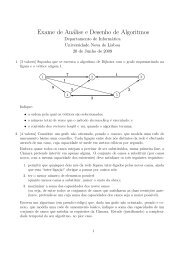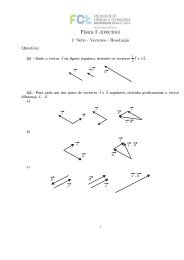Security Articles from Wikipedia
Security Articles from Wikipedia
Security Articles from Wikipedia
Create successful ePaper yourself
Turn your PDF publications into a flip-book with our unique Google optimized e-Paper software.
Cryptographic hash function 31<br />
Applications<br />
Verifying the integrity of files or messages<br />
An important application of secure hashes is verification of message integrity. Determining whether any changes<br />
have been made to a message (or a file), for example, can be accomplished by comparing message digests calculated<br />
before, and after, transmission (or any other event).<br />
For this reason, most digital signature algorithms only confirm the authenticity of a hashed digest of the message to<br />
be "signed." Verifying the authenticity of a hashed digest of the message is considered proof that the message itself<br />
is authentic.<br />
A related application is password verification. Passwords are usually not stored in cleartext, for obvious reasons, but<br />
instead in digest form. To authenticate a user, the password presented by the user is hashed and compared with the<br />
stored hash.<br />
File or data identifier<br />
A message digest can also serve as a means of reliably identifying a file; several source code management systems,<br />
including Git, Mercurial and Monotone, use the sha1sum of various types of content (file content, directory trees,<br />
ancestry information, etc.) to uniquely identify them. Hashes are used to identify files on peer-to-peer filesharing<br />
networks. For example, in an ed2k link, an MD4-variant hash is combined with the file size, providing sufficient<br />
information for locating file sources, downloading the file and verifying its contents. Magnet links are another<br />
example. Such file hashes are often the top hash of a hash list or a hash tree which allows for additional benefits.<br />
One of the main applications of a hash function is to allow the fast look-up of a data in a hash table. Being hash<br />
functions of a particular kind, cryptographic hash functions lend themselves well to this application too.<br />
However, compared with standard hash functions, cryptographic hash functions tend to be much more expensive<br />
computationally. For this reason, they tend to be used in contexts where it is necessary for users to protect<br />
themselves against the possibility of forgery (the creation of data with the same digest as the expected data) by<br />
potentially malicious participants.<br />
Pseudorandom generation and key derivation<br />
Hash functions can also be used in the generation of pseudorandom bits, or to derive new keys or passwords <strong>from</strong> a<br />
single, secure key or password.<br />
Hash functions based on block ciphers<br />
There are several methods to use a block cipher to build a cryptographic hash function, specifically a one-way<br />
compression function.<br />
The methods resemble the block cipher modes of operation usually used for encryption. All well-known hash<br />
functions, including MD4, MD5, SHA-1 and SHA-2 are built <strong>from</strong> block-cipher-like components designed for the<br />
purpose, with feedback to ensure that the resulting function is not bijective. SHA-3 finalists include functions with<br />
block-cipher-like components (e.g., Skein, BLAKE) and functions based on other designs (e.g., JH, Keccak).<br />
A standard block cipher such as AES can be used in place of these custom block ciphers; that might be useful when<br />
an embedded system needs to implement both encryption and hashing with minimal code size or hardware area.<br />
However, that approach can have costs in efficiency and security. The ciphers in hash functions are built for hashing:<br />
they use large keys and blocks, can efficiently change keys every block, and have been designed and vetted for<br />
resistance to related-key attacks. General-purpose ciphers tend to have different design goals. In particular, AES has<br />
key and block sizes that make it nontrivial to use to generate long hash values; AES encryption becomes less<br />
efficient when the key changes each block; and related-key attacks make it potentially less secure for use in a hash









